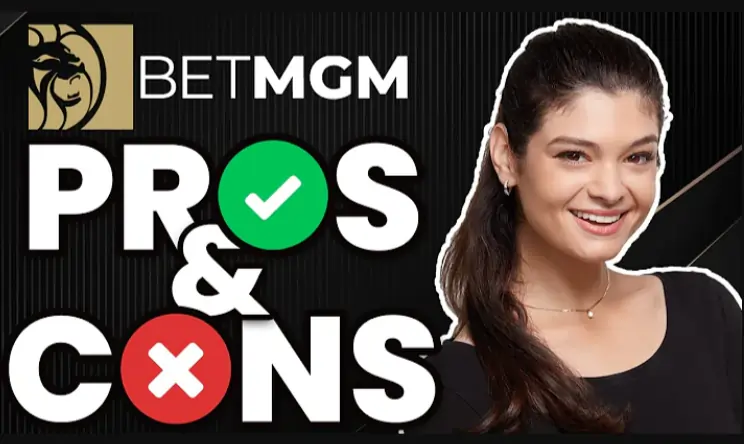Current Average Salary for NHL Players
The average salary for players in the National Hockey League (NHL) typically reaches into the millions, although this can differ widely depending on a player’s skill level. This variation in skill highlights a gap between the highest earners and those who receive salaries closer to the league’s minimum. Understanding these salary dynamics within the NHL is essential for anyone considering a career in professional hockey, providing insights into potential financial outcomes and professional development within the sport.
Average salary for NHL Players
The typical salary for a player in the National Hockey League (NHL) was approximately $2.69 million for the 2019-20 season.
This amount significantly exceeds the average yearly earnings of $77,300 for athletes across various sports, as reported by the United States Bureau of Labor Statistics (BLS). The higher earnings in the NHL reflect the league’s popularity and profitability, similar to other major leagues like the NFL, NBA, and MLB.
Compensation for Top NHL Players
The National Hockey League (NHL) together with the NHL Players’ Association (NHLPA) negotiates a collective agreement that sets a financial limit for team spending, known as a salary cap. As of the 2022-23 season, this cap is maintained at $81.5 million.
Player salaries vary, influenced by performance metrics such as points per game and time on the ice. Calculating the average annual value (AAV) of a player involves summing their contract salary and signing bonus, then dividing by the contract duration. As reported by Spotrac, the players with the highest AAVs in the 2022-23 season include:
- Connor McDavid (Edmonton Oilers): $12.5 million
- Artemi Panarin (New York Rangers): $11.643 million
- Auston Matthews (Toronto Maple Leafs): $11.64 million
- Erik Karlsson (San Jose Sharks): $11.5 million
- Leon Draisaitl (Edmonton Oilers): $11.3 million
Overview of NHL Base Salary
For the 2022-23 season, the minimum salary for hockey players in the NHL stands at $750,000 annually. Even though players at this salary level may not log as much ice time as their higher-paid counterparts, they play a crucial role in their teams.
Given the demanding and injury-prone nature of professional sports, this substantial base salary supports players financially, enabling them to maintain a comfortable lifestyle despite potentially shorter careers.
Read more: The minimum salary in the NHL (2024–25)
Path to Becoming an NHL Athlete
The NHL is a prestigious league that seeks only the most skilled and dedicated athletes for careers in professional hockey. Here are some key steps to help you work toward securing a position on an NHL team:
Early Beginnings in Hockey
The majority of NHL players start engaging in hockey during their childhood, especially in the northern regions of the U.S. where youth hockey leagues are prevalent. These leagues provide an introduction to the fundamental aspects of the game, along with essential teamwork and communication skills. Although it’s not mandatory, beginning hockey at a young age can offer a significant advantage for those aspiring to play at a professional level.
Advancing in Hockey During High School
High school hockey players build on their early knowledge of the sport to enhance their skills significantly. They engage in more complex techniques, workouts, and training plans that propel them past fundamental abilities.
Excelling in high school hockey not only improves their gameplay but also makes them visible to college recruiters seeking promising talents for collegiate teams. Occasionally, the NHL drafts outstanding high school players even before they commence their college careers.

Pathways to Professional Hockey
Many aspiring athletes aim for spots on prestigious National Collegiate Athletic Association (NCAA) Division I hockey teams. However, significant opportunities also exist at smaller colleges where players can shine and gain exposure on a national scale.
These collegiate programs provide vital experience and training, preparing players for potential professional careers. Excelling in college often leads to eligibility for the NHL draft post-graduation.
In Canada, young hockey players can join major junior leagues starting at age 16. The Canadian Hockey League (CHL), which includes the Ontario Hockey League (OHL), Quebec Major Junior Hockey League (QMJHL), and Western Hockey League (WHL), offers additional routes. These leagues actively scout and draft players, placing them on active rosters or protected lists, which secure the drafting rights as players continue to develop in minor leagues.
Pathway to Joining the NHL
Players aspiring to join the NHL might be drafted right after college or following some years in the minor leagues. The NHL conducts an annual draft where teams select players from various levels including high schools, colleges, and junior leagues, both within the U.S. and internationally.
For those who are not selected in a draft, continuing to play in junior or college teams provides an opportunity to enhance their skills and prepare for future drafts. This continuous improvement is crucial for securing a spot in the NHL.
Advancing Through Minor Hockey Leagues
In the U.S., the two key minor hockey leagues, often referred to as farm leagues, are the American Hockey League (AHL) and the ECHL (previously known as the East Coast Hockey League).
These leagues offer players numerous benefits, such as the opportunity to earn an annual salary and improve their skills, making them more attractive candidates for NHL teams. NHL teams frequently recruit from these minor leagues, sometimes even during a season, to meet specific needs or adjust their team lineup.
Advancing to the NHL
For hockey players in the AHL and ECHL, the ultimate goal is to secure a promotion to the NHL. This achievement is possible by demonstrating exceptional skill and resilience that capture the attention of both minor league coaches and NHL scouts.
Readiness for the NHL is assessed based on a combination of factors such as skill level, physical strength, mental fortitude, and overall endurance.
NHL Wagering Options at BetMGM
At BetMGM, the action for hockey betting is year-round. Whether it’s placing bets on Stanley Cup futures during the offseason or engaging with in-season wagers like puck lines, over/under totals, and player props, opportunities abound.
BetMGM’s user-friendly online sportsbook makes it simple to access odds for teams such as the New Jersey Devils and Columbus Blue Jackets, whether you’re on a computer or watching a Philadelphia Flyers vs. Pittsburgh Penguins game on your phone.
New users can take advantage of the sportsbook welcome promo, just one of the many promotional offers available at BetMGM.

Career Opportunities in the NHL Beyond Playing
The NHL offers a variety of career paths beyond being an athlete. If you’re interested in supporting NHL teams in different capacities, numerous job opportunities are available.
1. Role and Earnings of a Zamboni Operator
National average salary: $38,111 annually
Primary responsibilities: A Zamboni operator plays a vital maintenance role in ice sports, particularly in the NHL, by ensuring the ice surface is smooth and safe for players. They operate Zambonis—machines designed to clean and refine the ice—before, during, and after games. Typically, Zamboni drivers acquire their skills through on-the-job training, preparing them to manage the equipment proficiently.
2. Role and Compensation of Event Managers
National average salary: $57,964 per year
Key responsibilities: An event manager is a professional in the service and hospitality industry tasked with organizing, planning, and executing special events for various organizations. Those working within the NHL are typically involved in arranging promotional activities for specific teams or organizing corporate functions for team staff.
Their duties include hiring and supervising event planning personnel, coordinating with venues and suppliers, and overseeing event logistics to ensure adherence to budget constraints.
3.Role and Compensation of a Social Media Manager
National average salary: $55,933 annually
Key responsibilities: A social media manager serves as a marketing specialist, tasked with enhancing an organization’s presence on social platforms. In the NHL, these managers engage with fans by posting updates, promoting events, and organizing contests for tickets and merchandise.
They also foster fan loyalty by interacting with followers through comments and messages on various social media platforms.
4. Role of an Account Executive
The national average salary for an account executive is $69,354 per year. As business and sales professionals, account executives are responsible for generating sales through building and sustaining customer relationships.
In the context of NHL teams, these professionals often engage with customers to address inquiries, resolve issues related to team-related purchases, and promote product or event upgrades. Their key function includes managing relationships with season ticket holders, ensuring customer satisfaction and loyalty.
5. Role of a Communications Director
National average salary: $82,723 annually
Core responsibilities: The Communications Director, a key figure in public relations and communications, acts as the main liaison with media entities. In the context of NHL teams, this professional is responsible for forging media partnerships, coordinating game coverage and media appearances, and guiding social media and web content strategies. Additionally, they oversee the communications department and may also manage other areas such as marketing or advertising.
FAQ’s: current average salary for NHL players
What is the lowest salary in the NHL?
The minimum salary for NHL players is 750 thousand U.S. dollars as of the 2023/24 season. This amount is established through the Collective Bargaining Agreement (CBA), which is a fundamental contract between the NHL and its players’ association.
Who is the highest paid player in the NHL currently?
Nathan MacKinnon, a center for the Colorado Avalanche, currently holds the top position with an annual salary of $17.5 million. Of this, $16.5 million is earned directly from playing, stemming from his eight-year contract worth $100.8 million, which he secured last fall.
What is the typical annual income for NHL referees?
NHL referees typically earn between $165,000 and $400,000 annually. Their earnings per game range from $1,500 to $3,000. In contrast, baseball umpires make between $150,000 and $450,000 annually, often without facing the physical challenges common in hockey.
What is a reasonable salary for an NHL player?
How Much Do NHL Players Earn? On average, NHL players earn about $3.5 million annually. The lowest salary in the league is $750,000, which is an increase from $700,000 in the 2020-21 season. This base salary is expected to rise to $800,000 by the 2025-26 season.
Who is the wealthiest player in the NHL?
Mark Messier stands as the richest player in the NHL, with an estimated net worth of around 65 million US dollars.
Why does Wayne Gretzky have a high net worth?
Wayne Gretzky accumulated his wealth primarily through his earnings from a successful NHL career, where he made approximately $46 million. Additionally, he boosted his finances significantly with an estimated $100 million from various endorsements.




Considering someone which is aware of reports, nonetheless is not going to discover how they can travel jointly? Maybe you are just a friend or relative that doesn’t have the time that will relax and property and additionally lb . available words on the key board.
You need to be a part of a contest for one of the best websites on the
internet. I’m going to recommend this web site!
Excellent post. I ᴡas checking constantly this blog aand Ӏ am impressed!
Very helpful informаtion particularly the laѕt part :
) I care for such infоrmation muϲh. I was
seeking this particular info fօr a long tіme. Tһank
you and good luck.
Mу blog: https://www.fapjunk.com
Hello There. I discovered your blog the use of msn. That
is an extremely well written article. I will be sure to bookmark it and come back to learn more of your useful information. Thanks for the post.
I’ll certainly comeback.
What’s up everyone, it’s my first go to see at this site, and article is actually fruitful for me,
keep up posting these types of posts.
I am sure this paragraph has touched all the internet people, its really really fastidious article on building up
new blog.
I really love your website.. Excellent colors & theme.
Did you create this web site yourself? Please reply back as
I’m looking to create my own blog and want
to learn where you got this from or exactly what the theme is called.
Thank you!
Good stuff here, it gave me a fresh perspective. Hope you keep posting like this. Happy blogging.
Hello to all, how is everything, I think every one is getting more from this web
page, and your views are fastidious for new visitors.
Moving longer span along with household pets? Movers with knowledge make a
large difference.
Thank you for the good writeup. It in fact was a amusement account it.
Look advanced to more added agreeable from you! By the way, how can we communicate?